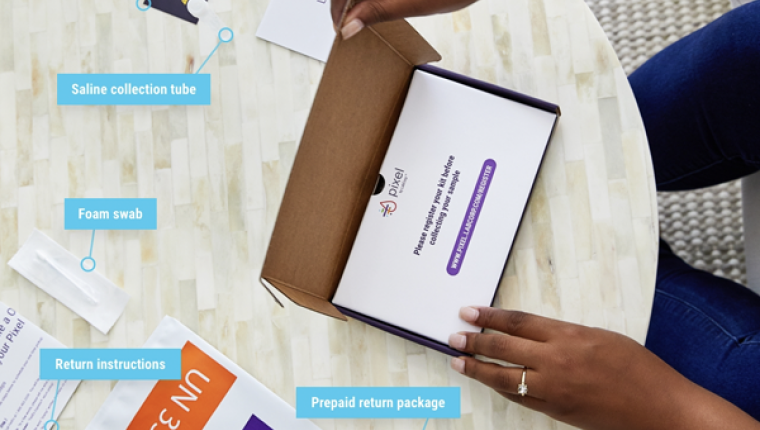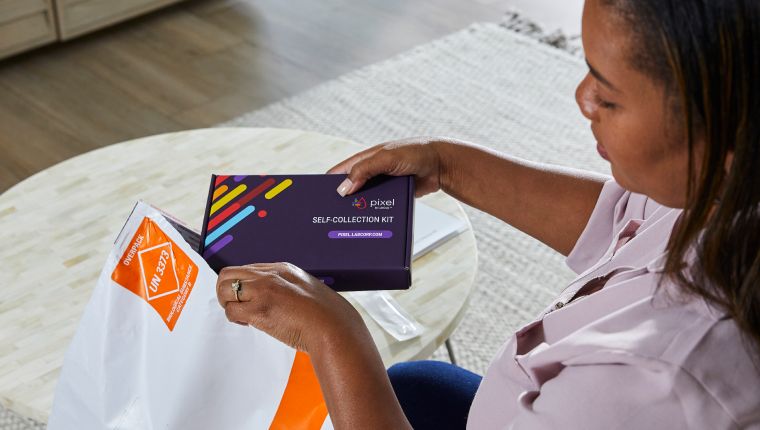Year three of the pandemic has brought its fair share of challenges, but it has also highlighted some positive and impactful changes in healthcare. We’ve identified five ways our healthcare has adapted and improved for the better since the start of the COVID-19 pandemic.
Early on in the pandemic, our healthcare system began innovating and reimagining patients’ access to healthcare due to social distancing, and spatial and economic limitations.
These achievements have helped patients gain access, convenience and control over their health. Patients have different healthcare options, and those options allow for ease of access to even more ways to get answers on their health. Healthcare providers are empowering patients to take control of their own health through education, awareness and at-home testing options.
Let’s take a look at how healthcare has changed for the better.
The pandemic expanded patient access through telehealth
The pandemic made physical access to healthcare extremely difficult with social distancing and lockdowns.
Live conferencing solutions revolutionized the stay-at-home workforce, and similar solutions have improved access to healthcare. Telemedicine—or telehealth—involves linking with your primary care provider or healthcare worker through virtual doctor visits. Early on in the pandemic, the U.S. government lifted many restrictions on telehealth, allowing for easier access while maintaining CDC guidelines of social distancing and lockdown protocols.
Chris Jennings, policy consultant and former healthcare adviser to the Obama and Clinton administrations states, “There’s the assumption in primary care that you always had to have in-person contact, and that telemedicine would be unsatisfactory, or wouldn’t fill the void. That’s been exposed—actually, it’s safer, it’s quicker, and it’s easier… People are now seeing this model, which we thought would take years and years to develop. And it’s probably been accelerated by a decade.”
Overall, telehealth has been widely and positively received as a good option for easing access to healthcare. According to a poll conducted for NPR, the Robert Wood Johnson Foundation and the Harvard T.H. Chan School of Public Health:
• 42% of households report using telehealth in the past few months
• 82% report being satisfied with the advice or treatment they received during their most recent experience.
Most of the changes are relevant to primary care, but specialized care is seeing improvements as well. For example, addiction specialists are able to prescribe drugs to treat opioid dependency, and podiatrists are able to treat patients with diabetes using cameras and video.
So many providers are able to maintain connections with their patients, and patients like you are empowered more than ever to access your healthcare professionals from anywhere.
Direct-to-consumer testing has improved patient access to health testing
People have also been empowered with greater healthcare access through direct to consumer testing developments. Naturally, there was a huge need for COVID-19 testing to be available directly to consumers. This happened quickly with at-home options—like the COVID-19 PCR at-home collection kits and at-home rapid tests.
During the COVID-19 pandemic, at-home testing became more of a norm and, in some cases, a weekly routine. For families returning to work and sending their kids to school, COVID-19 testing is part of regular conversation. That’s because testing advancements have made it relatively easy and have empowered people to be more proactive about their daily health.
COVID-19 home testing opened the doors for people to be comfortable with requesting other types of tests, like colon cancer screening and general wellness tests. When looking for testing on your own, it’s important to choose the same tests that are trusted by doctors.
As the direct to consumer testing options continue to expand, people will be able to take tests that monitor conditions over time and share results with their doctor. This not only makes it easier and more convenient, but also helps people that don’t have access to healthcare nearby, still get the screenings they need.
The pandemic is changing how we pay for healthcare
Paying for healthcare can be complicated.
A global health crisis like a pandemic puts immense pressure on healthcare economies, and COVID-19 has been no exception.
Fortunately, real progress has been made to provide more convenient payment methods. Advancements in telemedicine also have created the need for and development of better and more integrated digital payment systems, so patients can much more conveniently pay for their healthcare.
Further progress has been made in the increased adoption of what’s called value-based care. In this payment model, the traditional provider-fee-for-service reimbursement is replaced by one that ties care delivery payments to the quality of care provided. In short, value-based care models center more on patient progress and results than on the quantity of services (e.g., number of tests) that a patient received.
These models can have tremendous impact and can even help reduce hospital readmissions while emphasizing preventive care.





